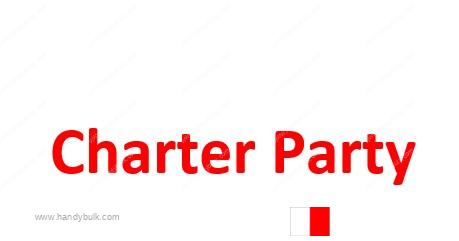
Charter Party
Most Standard Charterparty Forms began by being imposed on the market by the charterers for two reasons.
First, they needed a charter party, which fitted in to their contracts of sale of the commodity itself.
Secondly, the charterer would always tend to be in a somewhat stronger position when it came to terms and conditions because charterers are static and so find it easier to band together even with competitors to devise terms appropriate to the commodity and suitable to them all. Such strength against a single ship is likely to win the day.
In some parts of the world individual charterers could even have a virtual monopoly. The merchants did not have things all their own way for long. Such national bodies as the United Kingdom Chamber of Shipping and international organisations such as the Baltic and International Maritime Council (BIMCO) formed rallying points for shipowners to fight against the more iniquitous charterers’ forms.
The result has been mutual agreement between the charterers and the owners so that the charterers’ terms have been modified sufficiently for the owners’ organisations to Adopt them. In many cases it has been the owners’ side, which has eventually published the form for the trade.
For example, whenever you see a charter party form the code name for which ends in CON (for CONtract) it is almost certain that it was published by or with the collaboration of BIMCO who are renowned to this day for their active and successful documentary committee.
Even in those cases where the charterers have not had their forms adopted by the shipowners’ organisations, the compilers have been sensible enough to avoid a form too heavily weighted in charterers’ favour. The existence of standard forms, with their world-wide recognition, obviously facilitates negotiations in which the parties being able to say; “otherwise…con charter” save much time. The printed clauses in so many cases have stood the test of time with legal precedent ensuring that ambiguous wording is avoided.
Unfortunately, when one tries to produce something which seeks to suit everybody it inevitably does not exactly suit anybody so some of the convenience of standard forms is lost due to the amendments and/or additional typed clauses demanded by one side or the other in order to make it fit their precise circumstances.
In some trades the standard form has now become nothing more than a framework on which to hang dozens of extra clauses.
A classic example of this is the Gencon Charterparty. As its name suggests it is a general purpose form intended for cargoes or trades for which no specific form exists. One
has to concede that, as printed, it is heavily weighted in the shipowners’ favour and large areas tend to get deleted and replaced with typed clauses.
Such is the conservatism of the chartering world that both sides seem to prefer using a radically mutilated Gencon Charterparty than move over to the more modern and more even handed Multiform Charterparty published by FONASBA (The Federation of National Associations of Ship Brokers and Agents).
So far we have been considering single voyage charters where the ship agrees to go to ‘A’ to load a cargo of an agreed quantity of a commodity and carry it to ‘B’ for which the consideration will be a rate of freight probably calculated on a per tonne basis.
Many charterers, however, have more than just one cargo to move and in consequence, may find it convenient, particularly with an eye to fixing their costs, to contract with an owner for the ship to make a series of consecutive voyages. This procedure lends itself especially well to trades where it is usual for the ship to make the passage to loading port in ballast.
However one needs an alternative to consecutive voyages, especially when the
frequency of loading does not coincide with the consecutive voyages of the one ship, or in trades where returning in ballast is not the norm.
In such a case the method would be for the charterer and owner to agree parameters covering the frequency of loading, the ranges of size of the ships to be employed and the total quantity to be lifted within a given period. This leaves the owner a considerable degree of flexibility so that he can keep his ships as fully employed as the market will allow, even nominating other people’s ships chartered-in by the owner should he not have one of his own in the right position. It is such contracts as these, which are known colloquially as Contracts of Affreightment (COA).

